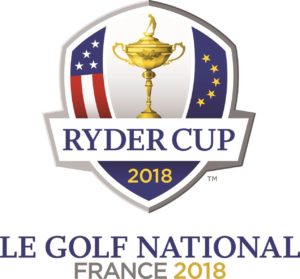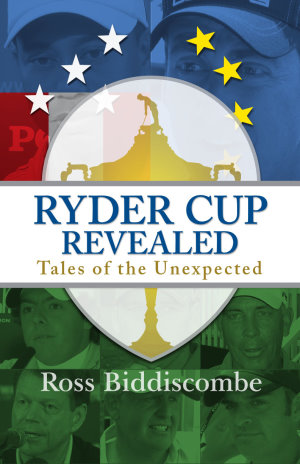 Ryder Cup viewing figures of 500 million potential TV fans in 183 countries are bandied about these days along with rights fees in their millions. But television and the Ryder Cup have not always been happy bedfellows, writes Ross Biddiscombe.
Ryder Cup viewing figures of 500 million potential TV fans in 183 countries are bandied about these days along with rights fees in their millions. But television and the Ryder Cup have not always been happy bedfellows, writes Ross Biddiscombe.
The TV income and interest in the 21st century seems like science fiction when you realise that when the Ryder Cup began in 1927, there weren’t any televisions in British or American homes.
The interest in filming the contest came in those days from newsreel companies and in 1929 the Gaumont Company (more famous for making movies and owning chains of cinemas) bought the first newsreel rights for a match from the British PGA for £15 15s. 0d. at a time when golf was a very difficult sport to film. Spread over so much ground and with costly technical difficulties to overcome, the early Cups were filmed just by a couple of newsreel cameras fixed on top of small trucks or set firm on the first tee.
The Ryder Cup finally came to television in Britain in 1953 with the BBC filming at Wentworth and then televising match highlights. It was a development prompted by the huge number of TV sets sold for the Queen’s coronation that summer.
The first TV coverage of the Cup of any kind in America was in 1959, just two hours of highlights on the NBC network, while the first live pictures were broadcast from Royal Birkdale in 1965, but the action was limited because there were only cameras on the final few holes. The attitude of TV to the Cup was largely one of apathy and rights fees were ‘virtually nothing’, even in in the 1970s.
Meanwhile in America, the Cup had become television poison. In 1983, Roone Arledge, the president of ABC Sports at the time, is reported to have made a rather unusual offer to the PGA of America: he wanted to pay them back $1 million in order that he did not have to broadcast the Ryder Cup from PGA National Golf Club in Florida. It was not an offer the PGA of America accepted, but it demonstrated the low level of interest in the one-sided matches.
 However, that win by Europe in 1985 was a breakthrough moment for all the television channels. The BBC showcased this tournament with extra live hours, while American broadcasters (who had previously only been interested in the US-based matches) finally screened an ‘away’ match, although it was only one hour of highlights broadcast on the cable sports channel, ESPN, seven weeks after the event!
However, that win by Europe in 1985 was a breakthrough moment for all the television channels. The BBC showcased this tournament with extra live hours, while American broadcasters (who had previously only been interested in the US-based matches) finally screened an ‘away’ match, although it was only one hour of highlights broadcast on the cable sports channel, ESPN, seven weeks after the event!
The BBC upped its game after that and provided its first live pictures from a match in America at Muirfield Village in 1987 while US viewers saw a record 6½ live hours that year. The matches were still not always treated as broadcasting royalty, though. For example, US coverage was so haphazard in 1987 that viewers were watching a commercial break when Seve Ballesteros holed the winning putt for the Europeans. Two years later in 1989, the BBC managed to have cameras on all 18 holes for the first time and American viewers saw live TV pictures from Britain for the first time.
By the 1990s, sports broadcasting rights had become a real hot property as cable and satellite channels like ESPN and Sky Sports had grown large enough to bid either against or alongside their larger, terrestrial rivals. In Britain, Sky Sports had outbid the BBC for exclusive live rights to the Cup in time for the 1995 match and showed every shot, from opening drive to final putt, while USA Network, first, then ESPN and The Golf Channel screened all three days plus plenty of special programming from the practice days.
At the same time, the fees were growing enormously. TV income from the 1991 match at Kiawah Island had been around $1 million, but the fee had grown to $13 million by the 1999 contest at Brookline. In Britain, while the BBC were said to be paying less than £100,000 for all its golf programming before 1995 – including around half a dozen tournaments a year plus the Cup – suddenly BSkyB, on behalf of Sky Sports, wrote out a cheque of more than £1 million to the European Tour and agreed to show many more regular tournaments as part of the package.
 There is a sensitivity about the current TV value of the Ryder Cup and the absolute numbers are kept a closely guarded secret, but industry experts still try to put a number on it despite the fact that extracting the Cup from within a package of rights fees further complicates the matter. However, the estimated income generated by the US-based matches from TV companies from around the world is $35-40 million, while for the European contests, the total is thought to be around £15 million. The slightly larger number for American matches is explained by US networks being willing to pay more for primetime Ryder Cup action in their own country rather than a match that starts at 3am, east coast time, when played in Europe.
There is a sensitivity about the current TV value of the Ryder Cup and the absolute numbers are kept a closely guarded secret, but industry experts still try to put a number on it despite the fact that extracting the Cup from within a package of rights fees further complicates the matter. However, the estimated income generated by the US-based matches from TV companies from around the world is $35-40 million, while for the European contests, the total is thought to be around £15 million. The slightly larger number for American matches is explained by US networks being willing to pay more for primetime Ryder Cup action in their own country rather than a match that starts at 3am, east coast time, when played in Europe.
American TV audiences for the Ryder Cup reached a record high of 17 million for the 1999 match at Brookline while the most recent ‘home’ match figures have also been decent. At Hazeltine four years ago, audiences peaked at 6.4 million on Sunday on NBC, while The Golf Channel reported record numbers averaging 673,000 viewers.
In a country of more than 300 million people, those figures may seem tiny, however, every US-based Ryder Cup match has to battle for viewers directly against two of America’s favourite September sports – gridiron football and baseball – and, for that reason, the numbers are thought to be very healthy.
In Britain, the BBC’s audiences of 30 years ago were in the millions simply because TV viewers in those days had a choice of only three channels. Sky Sports was still building its subscription numbers in the 1990s when it acquired live Ryder Cup rights, but now it boasts over 10 million homes as well as audiences in thousands of pubs and clubs throughout the country. By 2006, the estimated peak audience was over three million and that figure grew in 2012 to the channel’s highest ever audience for the Cup – at around seven million, watching either at home or in pubs and clubs.
With the Tiger Effect back – as much as a 40% jump in US television audiences when Woods is playing a golf tournament – at this year’s event plus the visitors defending the trophy, more record TV audiences, at least in the US, are almost a certainty.
This material is extracted and abridged from Ross Biddiscombe’s acclaimed book Ryder Cup Revealed which is available at amazon.co.uk via this hotlink: https://tinyurl.com/y9w75whd

